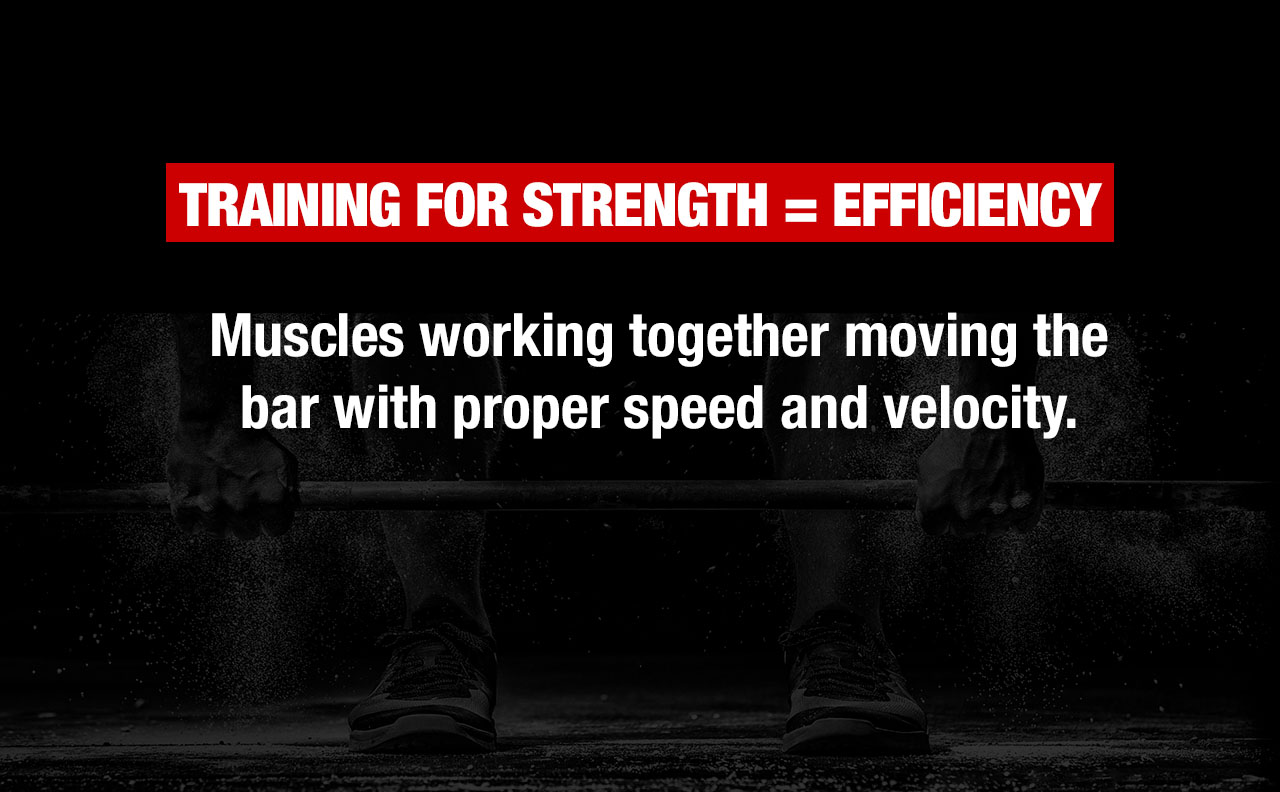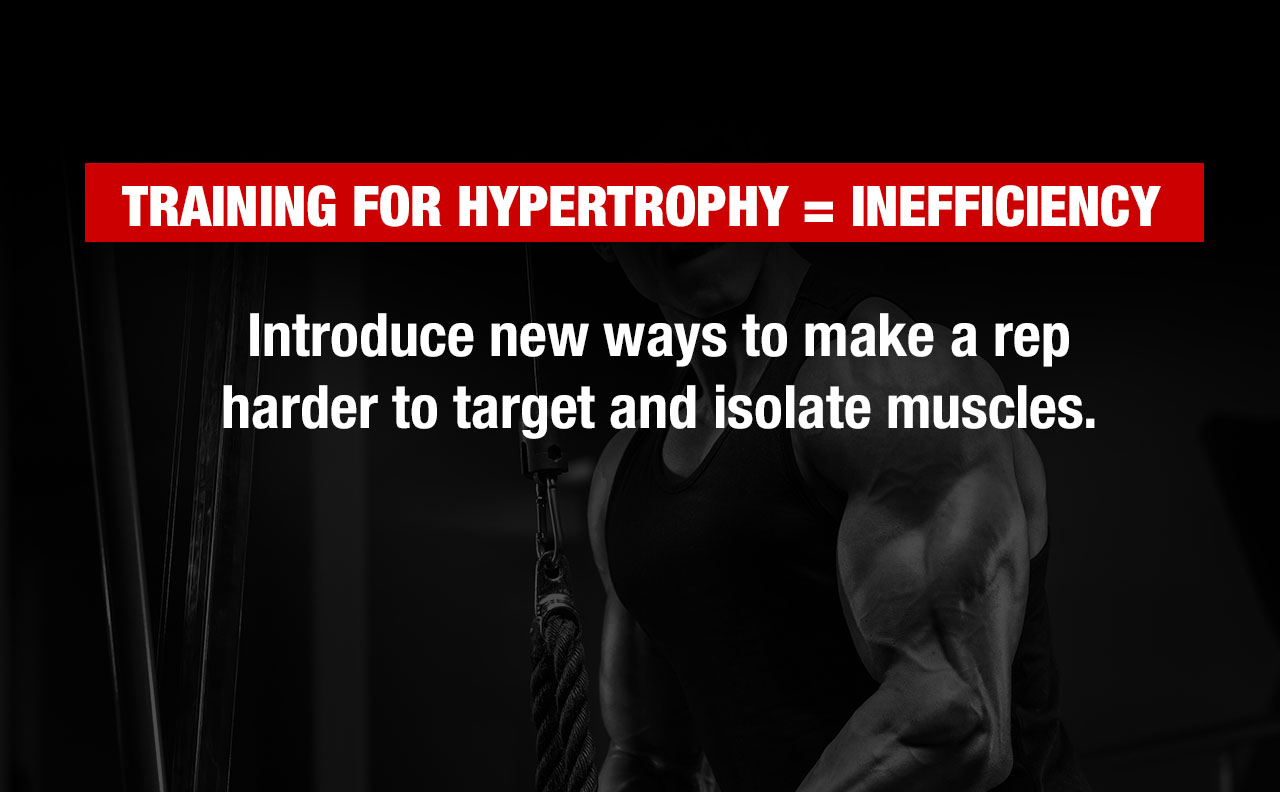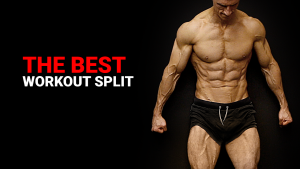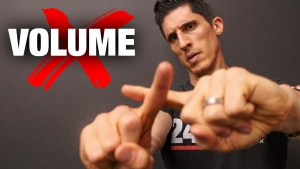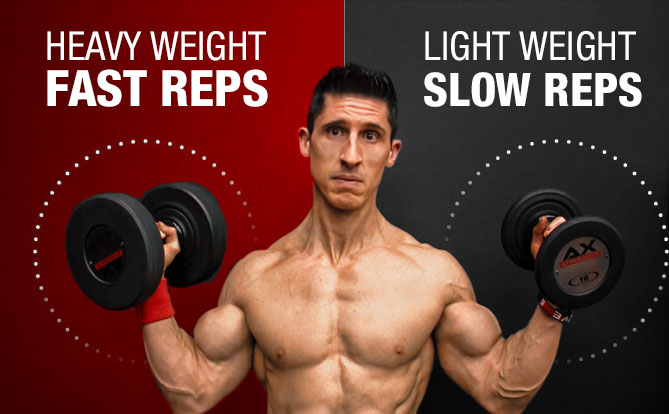
HOW TO PERFORM REPS
What’s the MOST important factor when it comes to performing reps for muscle growth?
Is it speed? After all, you can push it fast or slow, and speed definitely matters when it comes to reps vs. sets.
But is there something else – Something more important for how you perform your reps whether increasing strength or muscle building is your goal?
Maybe it’s intensity? Fiercely gripping the weight during the exercise will make it more intense and difficult.
What about your goals? Are you trying to build muscle or get stronger?
There are a lot of different ways you can lift a weight, and many types of training, but there are only a few variables that really matter when it comes to performing reps specifically to increase muscle mass.
Today, I want to help you determine how you should be performing your reps by comparing lifting for strength vs. muscle.
WHAT ARE YOU TRAINING FOR?
The first thing that I want you to think about is which fitness level goal are you trying to accomplish?
If you’re training for strength or hypertrophy (you want to build larger muscles), how you perform your repetitions for each exercise during your weekly training sessions is going to be vastly different.
STRENGTH = EFFICIENCY
Let’s first talk about building strength. If you’re training for muscular strength, there’s one thing you should always seek: efficiency. And the most efficient movements are compound exercises. These types of exercises work multiple muscle groups in the same movement.
To illustrate efficiency, let’s say you’re doing a bench press exercise.
You realize that the bench press is going to recruit your upper body muscles like the chest, shoulders, and triceps.

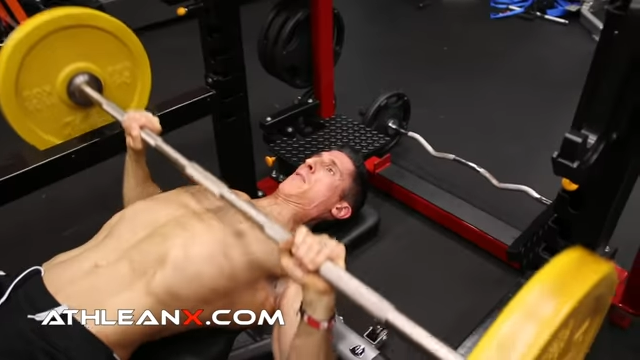
And if the goal is strength, then you know that you’re not going to try to isolate any of these muscles during a bench press.
You’re trying to get those muscles to perform the work together no matter if you’re using a barbell or dumbbells.
Traditional training protocols for strength is all about moving with proper bar speed and velocity so you can increase your power as well. After all, strength and power training methods go hand in hand.
But the one thing you don’t want to do if you’re training for strength is to isolate any one muscle.
BUT during muscle hypertrophy training or a muscle growth workout, that’s EXACTLY what you do.
HYPERTROPHY (MUSCLE GROWTH) = INEFFICIENCY
So, if you’re doing resistance training for muscle hypertrophy or if you want more muscle gains in terms of size, you should not be looking for efficiency, but inefficiency.
In other words, how can you introduce new ways to make a rep harder? That is the goal of hypertrophy training.
Remember how we talked about not isolating a muscle above? Well, that’s what we want to do during a hypertrophy workout plan, also known as bodybuilding training.
In other words, how can you introduce new ways to make a rep harder during your strength training routine?
Let’s continue with the bench press example from above.
Instead of looking for a way to round up all of the muscles to work together, you want to target and isolate one. You want to use different training variables to focus on that intense contraction as much as you can.
In the case of the bench press, you would want to focus on the chest muscles, squeezing your hands together at the top.
Then you would slowly lower the bar before pushing it back up to squeeze as hard as you can, focusing the contraction directly in the chest.
The more we can do that, the more stress we can deliver to the muscle tissue. This will help it to feel more overload and in response, it will adapt by growing bigger.
The triceps and shoulders are there, but for the purpose of muscle tissue mass, the focus isn’t on them.
HOW TO PERFORM REPS FOR MUSCLE GROWTH VS. STRENGTH
So, let me ask you again: what do you want to achieve with these training sessions?
Do you want to ensure your reps are on point to increase the size of the muscle fibers or do you want muscle strength? In either case, it’s about intensity and efficiency or lack thereof.
How you’re performing these reps – how you’re showing up to each set – will determine your results.
Let’s run through a few different scenarios using a lat pulldown machine as an example to illustrate how performance relates to intensity and your strength or muscle growth results.
HOW YOU PERFORM DETERMINES THE INTENSITY
Depending upon how you perform your reps in the journey to get from A to Z, your intensity level could be high or low.
For example, we’ve all seen guys at the gym loading up the weight stack and using momentum to move the weights.


Just because it’s a heavier weight doesn’t mean it’s going to produce better results, especially when you get under the bar and start throwing it down.
It’s especially useless when it comes to developing and trying to create hypertrophy in the lats.
While an occasional cheat rep is helpful for achieving that pump and muscle burn that you can feel in your blood vessels, you really want to focus on good, clean form with a great range of motion.
And remember, proper form will either be efficient, recruiting all of the necessary major muscle groups for strength, or it will be inefficient, isolating one muscle.
TRAINING TO FAILURE: STRENGTH
We already know that training to muscle failure is not always essential. Especially depending upon the volume of your training.
For example, high training volume strength training workouts such as high-rep training usually don’t need to be training to muscle failure on every rep. But to make this example very easy to understand, I’m going to say, “Train to failure.”
Let’s say that you’re training for strength AND let’s say you’re training with a 10-repetition maximum.
Just like above, when you’re after strength gains, you’re just worried about going from A to Z, choosing an exercise selection that recruits all of the necessary muscle groups.
When you’re doing a lat pulldown on a cable machine, you have your upper back and lats as supporting friends.


You realize that what you’re trying to do is get the bar down to your chest as efficiently as you can, with multiple muscles participating. That “train to failure” idea means that your muscle endurance is spent at 10 reps – That’s that.
So, when you get around rep number 10, you’re trying to pull and you can’t get anymore. This is because you’ve fatigued the overall movement, and not necessarily one specific muscle that participates in that movement.
Since most lifters tend to lift heavier loads for these strength gains, your rest time will also be longer. Adequate rest between sets is usually 1 to 3 minutes.
TRAINING TO FAILURE: MUSCLE GROWTH
To increase muscle size while training for failure, you tend to use a bit lighter weights, but not too much lighter.
Let’s say you’re shooting for a weight that normally allows you to hit a 12 to 13-rep max. But since you’re training for hypertrophy, your goal will be to intensify the movement to where that 13-rep max failure becomes a 10-rep max failure.
In other words, you want to focus on increasing tension in a specific area or muscle group of that lift so that you can’t go past 10 reps. You want to lighten the load a little bit because you’re going to focus on making this much more of an inefficient movement.
For your lats, specifically, you don’t want an overactivation and contribution from the forearms, biceps, or upper back.


You want to get your elbows down into your sides, adducting them hard, and back into extension so you can maximally activate the lats.
When you pull the bar down, you’ll squeeze, hang out there for a second, and then come up a little bit slower during the eccentric portion of the lift to hit those slow-twitch fibers. This intensifying technique ensures an optimal environment for hypertrophic microtears that will support your goal of muscle building.
Don’t give yourself a super long rest break here. Shortening your rest helps to increase and build on the work of the previous set.
TIME UNDER TENSION
Now, let’s talk about time under tension, which goes hand-in-hand with intensity.
A lot of guys will read this and think, “I knew it! All I need to do is go with much lighter weights and get that tension. Time under tension is everything.” Not so fast.
Guys, I preach the principle of time under tension a lot. BUT it’s not always a miracle cure for every fitness ailment you have.
Sure, you could take a really light weight, move slowly, and squeeze throughout, but if the threshold for intensity is too low, it’s just as useless as overloading the bar and using momentum.
And the only acceptable reason to use a super lightweight is muscular endurance or metabolic training.
The thing with this type of metabolic rate training is that the reps don’t officially begin UNTIL your muscle is burning. But this is another type of weight training program for another article.
Studies show that for building muscle mass, you need to train to muscle fatigue with heavy weights – a weight that is heavy enough to increase intensity but light enough to lift to failure and trigger that hypertrophic effect in the muscle cells.
A weight that is too light isn’t enough to cross that threshold to make it productive.
SOMEWHERE IN THE MIDDLE
Here’s the thing, guys: Regardless of whether you want to get stronger or build muscle mass, one can benefit the other. And that’s what the majority of advanced strength training workouts focus on: one goal complementing the other.
If you focus on exercises that go from A to Z, getting stronger as a result, then you can get better at intensifying techniques and lifting for inefficiency (hypertrophy), hitting those fast-twitch fibers.
Does that mean that you need to lift in the 2-to-5 rep ranges to get stronger?
NO! That’s a myth.
There shouldn’t be a focus on a low-rep group vs. high-rep group.
You can get stronger in any rep range so long as you’re using the appropriate amount of weight and moving it in an efficient manner.
Should you be lifting heavier weights as fast as possible or light weights with a slow and controlled tension if you want maximum muscle growth? Well, it’s a little bit of both.
To build muscle, you should perform your reps in an inefficient manner, focusing on intensity and isolate with the appropriate weight.
If you want a strength training program that takes all of these details and techniques into account check out our ATHLEAN-X programs.

- The most important question you should be asking yourself is, “What is my training goal at the moment?”
- If you are training for strength, then your goal with every exercise should be to make it as efficient as possible.
- During bench presses for example, you would want to be sure that you are pressing the bar with good speed along an optimal bar path with all muscle fibers contributing to the lift.
- If your goal is hypertrophy, you want to find a way to lessen the contribution of the supporting muscles and isolate the target muscle.
- Continuing with that example, during a bench press, you would want to isolate the chest muscle and disengage the shoulders and triceps.
- You can make the movement more inefficient by spending more time on the negative of each rep as well as holding and squeezing the contraction of the pecs at the top of every rep as much as possible.
- To create optimal tension, you can also opt for slightly lighter weights and use intensifying techniques like slow negatives and paused reps. This would elicit a greater stimulus for hypertrophy versus just pure strength.

Jeff Cavaliere M.S.P.T, CSCS
Jeff Cavaliere is a Physical Therapist, Strength Coach and creator of the ATHLEAN-X Training Programs and ATHLEAN-Rx Supplements. He has a Masters in Physical Therapy (MSPT) and has worked as Head Physical Therapist for the New York Mets, as well as training many elite professional athletes in Major League Baseball, NFL, MMA and professional wrestling. His programs produce “next level” achievements in muscle size, strength and performance for professional athletes and anyone looking to build a muscular athletic physique.
















